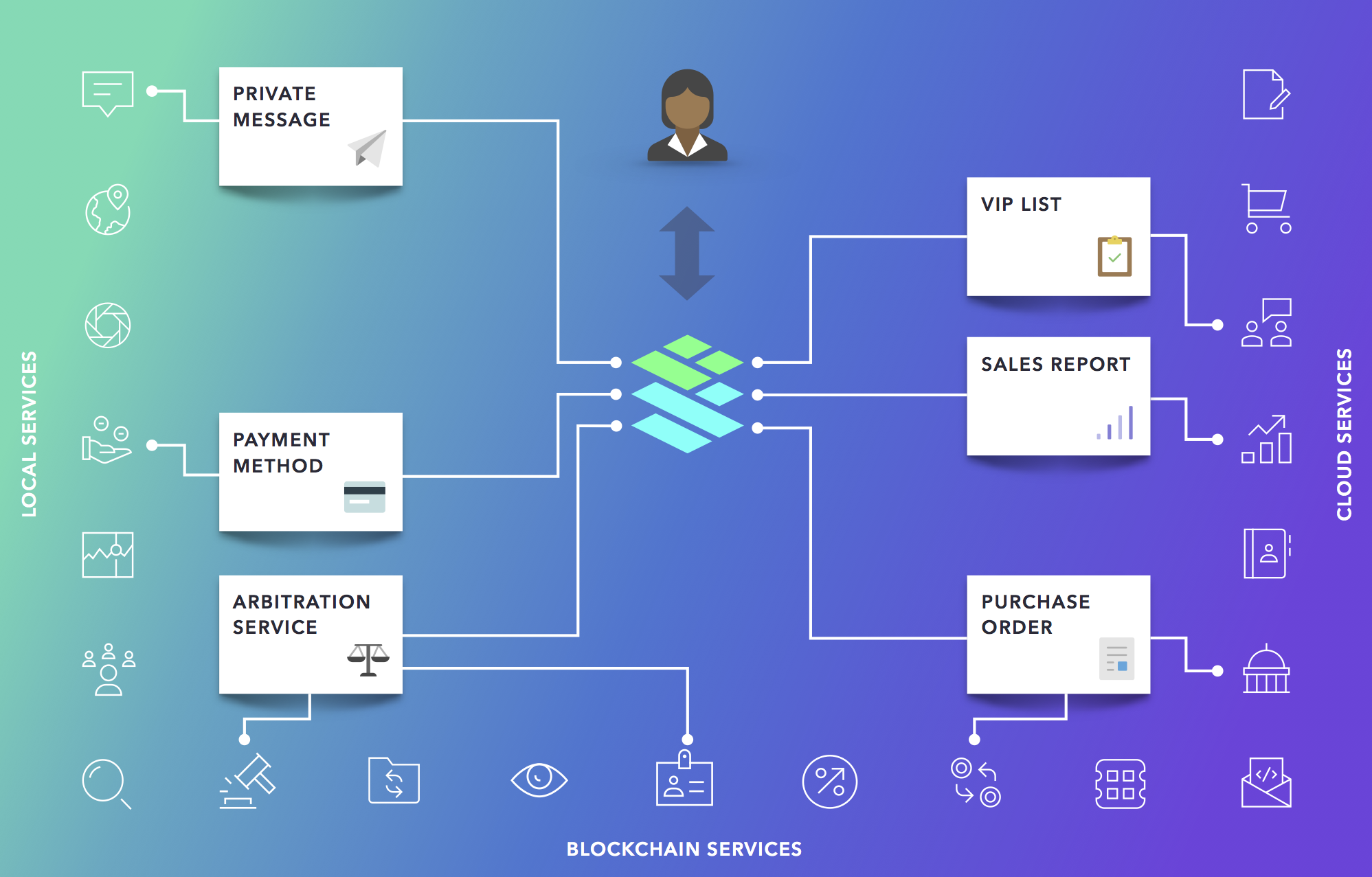Cardstack White Paper
The experience layer of the decentralized Internet
Centering the Internet Around the User

Decentralized User Experiences
Decentralization can be thought of more concretely as the recentralization of workflows around a user. The user can initiate, orchestrate, and make decisions about transactions that are coordinated locally (i.e. over the counter) via cloud-based market makers or through the logic and consensus mechanisms of various blockchains. Parity with traditional, single-function apps is not enough. The vision of multiple apps and dApps working in harmony demands a generational leap in user experience in terms of composability and interoperability.
As the use cases expand beyond crypto trading and finance, this general pattern of user orchestration can be used to redecentralize the data locked behind cloud-based subscriptions through integration hooks. With the right architecture and design system, a user-centric, decentralized UX can exhibit the fluidity of a consumer social network, while facilitating structured transactions like a line-of-business system.
Turning Services into Tangible Cards

The Rise of Card-based UI
To enable this breakthrough, we need to break the problem space of complex user interfaces and workflows into manageable pieces. Each piece is bite-sized, encapsulated, and happens to look like a physical card, which can be embedded, chained, auto-filled, attached, triggered, expanded, versioned, cloned, rescinded, and approved as part of a cohesive user experience; it floats effortlessly on top of multiple cloud environments and blockchains.
At the same time, we also need to zoom out and establish a new set of rules, working out how these cards can stand on their own, be embedded in other apps, and act as hosts for other cards when called upon to do so. We can then use the rewarding power of blockchain, streamlined through a card-based ecosystem, to make features that were previously offered in proprietary and expensive silos pervasively available to millions of people around the world as bona fide open-source software.
Bridging Blockchain and Cloud Services

(Un)Chain the Legacy Data
We need to break up the antiquated concept of the “almighty app” into smaller building blocks, which are in turn chained back together through the user's choices or the system’s recommendations. Once you turn data into cards, you own them forever.
Still, no person is an island. With the right syndication hooks — some based on blockchain technologies — data in the user’s personal cloud can be replicated and redacted as necessary, to contribute to a collective view in another user’s or organization’s cloud. After all, blockchain is really a coordination mechanism between a group of participating peers. Everybody is free to do what they will with the blockchain-delivered data. Whether you choose to participate directly via a computer you control, instantiate a personal cloud that runs 24/7 solely on your behalf, or let a third-party website do it for you in a multi-tenant way — that is entirely up to you.
Enabling Progressive Decentralization

What Users Need To Know
Users need to understand how to interpret the encapsulated information presented to them via these cards; they need to choose the appropriate action to take in order to complete the transaction, persuade another person, or grow into a greater authority. What they don’t need to know is what happens behind these cards: whether the transaction is transmitted through a cloud-based service or a blockchain protocol; whether the counterparty is another human or an autonomous agent represented by a smart contract; or whether the proof of identity and thus authority is provided by a blockchain ID or an on-device face ID.
The quest to move the majority of value-bearing interactions on the Net from centralized but extractive counterparties to decentralized but accumulating networks of mutual benefits will take time. As dApps mature to compete for users’ interactions, all they need to do is plug into the system behind a card-based facade and show the user a better way with minimal friction.